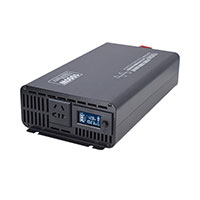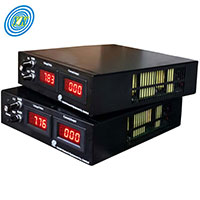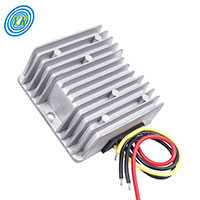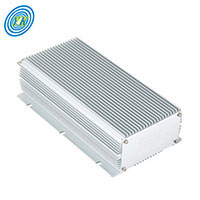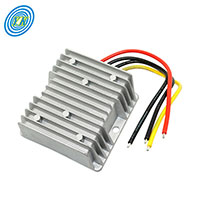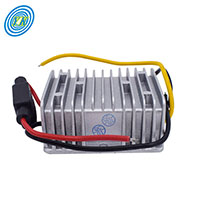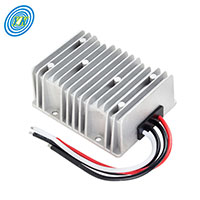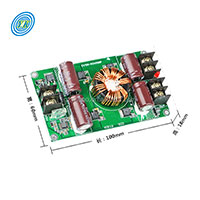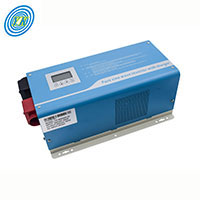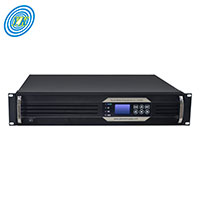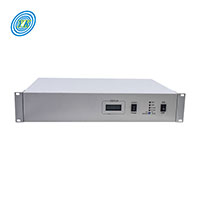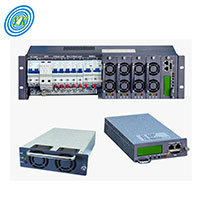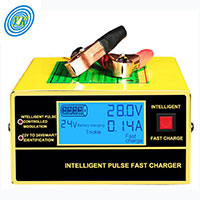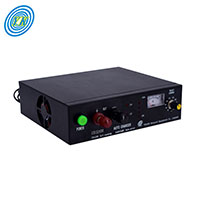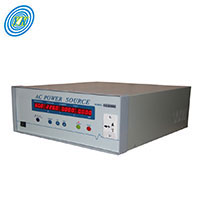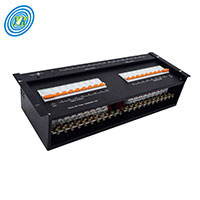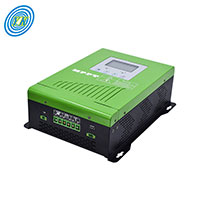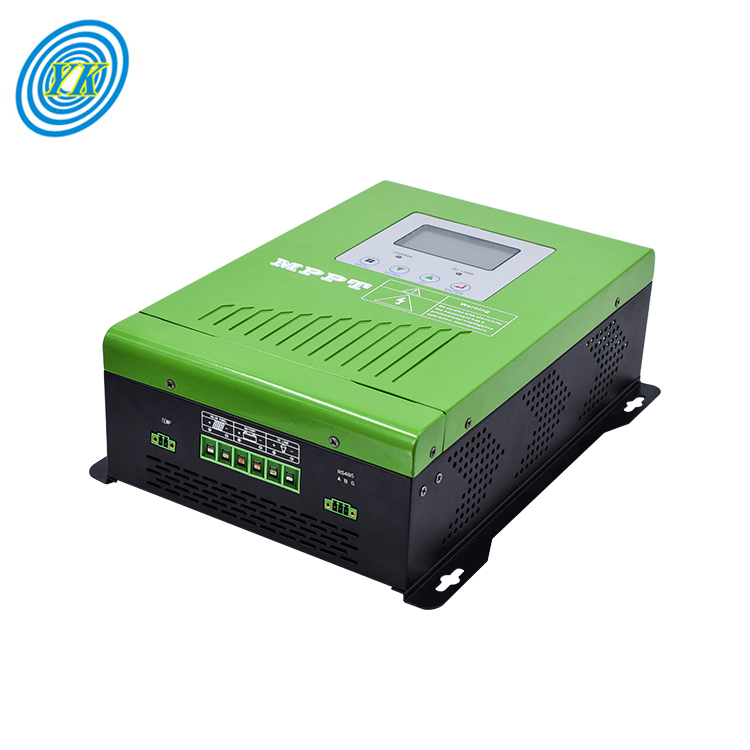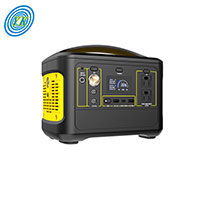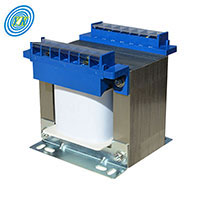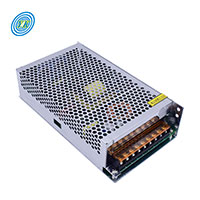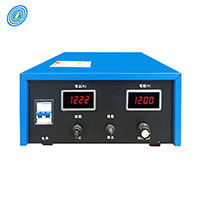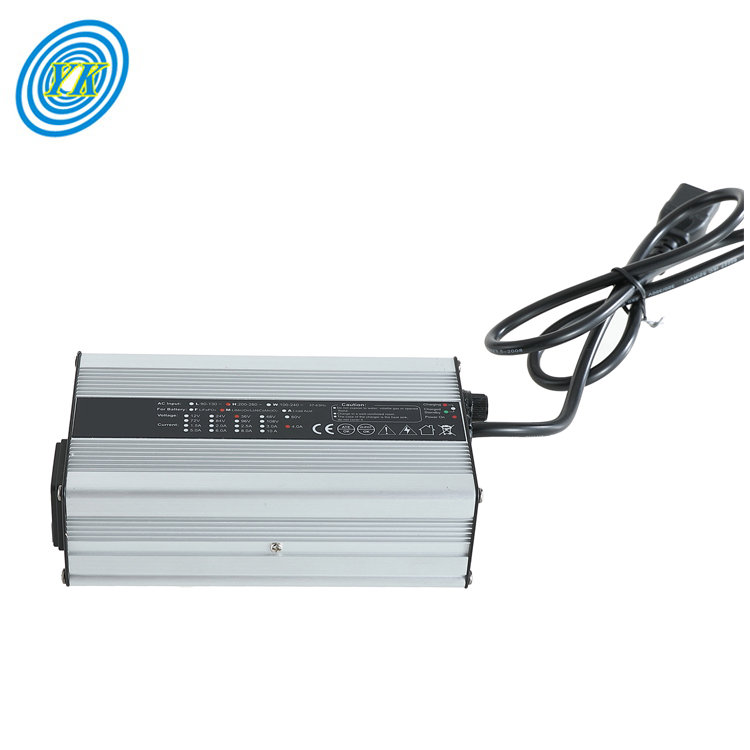
Exploring the World of Battery Chargers
Click: 1198 Date: 08/12/2024 2::50::52 PM
Understanding the Types of Battery ChargersBattery chargers come in various types, each designed for specific applications and battery chemistries. The most common types include trickle chargers, smart chargers, and fast chargers. Trickle chargers deliver a slow, steady charge, making them ideal for maintaining battery levels over time without overcharging. Smart chargers use microprocessors to monitor the battery's condition, adjusting the charging rate to optimize performance and extend battery life. Fast chargers, on the other hand, are designed to recharge batteries quickly, which is particularly useful for devices that are frequently in use.How to Choose the Right Battery Charger for Your NeedsSelecting the appropriate battery charger depends on several factors, including the type of battery, its capacity, and the intended use. Battery chemistry is a crucial consideration; for example, chargers designed for lithium-ion batteries may not be suitable for lead-acid batteries. The charging rate is also important, especially if you need the battery charged quickly. However, fast charging can reduce the overall lifespan of the battery, so it's essential to balance speed with long-term health. Additionally, features like overcharge protection, temperature control, and reverse polarity protection can enhance safety and efficiency.The Role of Smart Chargers in Modern TechnologySmart chargers represent a significant advancement in battery charging technology. These chargers are equipped with intelligent circuitry that monitors the battery's state and adjusts the charging process accordingly. By doing so, they prevent overcharging, which can lead to overheating and battery damage. Smart chargers can also recondition batteries, restoring some of their lost capacity and extending their usable life. They are especially useful for high-end electronics, electric vehicles, and renewable energy systems, where precise battery management is crucial.Safety Tips for Using Battery ChargersWhile battery chargers are generally safe to use, there are important precautions to keep in mind. Always match the charger to the battery type and ensure that the voltage and current ratings are compatible. Avoid charging batteries in extreme temperatures, as this can affect their performance and lifespan. It's also essential to use chargers that have built-in safety features such as overcharge protection and temperature regulation. Never leave a charging battery unattended for extended periods, especially with older or non-smart chargers.The Future of Battery Charging: Trends and InnovationsThe future of battery charging is being shaped by innovations such as wireless charging, fast charging, and energy-efficient technologies. Wireless charging, once limited to small devices, is expanding to larger applications, including electric vehicles and industrial equipment. Fast charging technology continues to evolve, reducing charge times without compromising battery health. Furthermore, advancements in renewable energy integration are enabling more efficient and sustainable charging solutions. As battery technology improves, we can expect chargers to become even more sophisticated, with capabilities like AI-driven charge optimization and enhanced safety features.In conclusion, battery chargers are an integral part of our daily lives, powering everything from smartphones to electric vehicles. Understanding the different types of chargers, how to choose the right one, and the role of smart chargers can help you get the most out of your batteries. As technology advances, the future of battery charging promises even greater efficiency, convenience, and safety, making it an exciting area to watch.
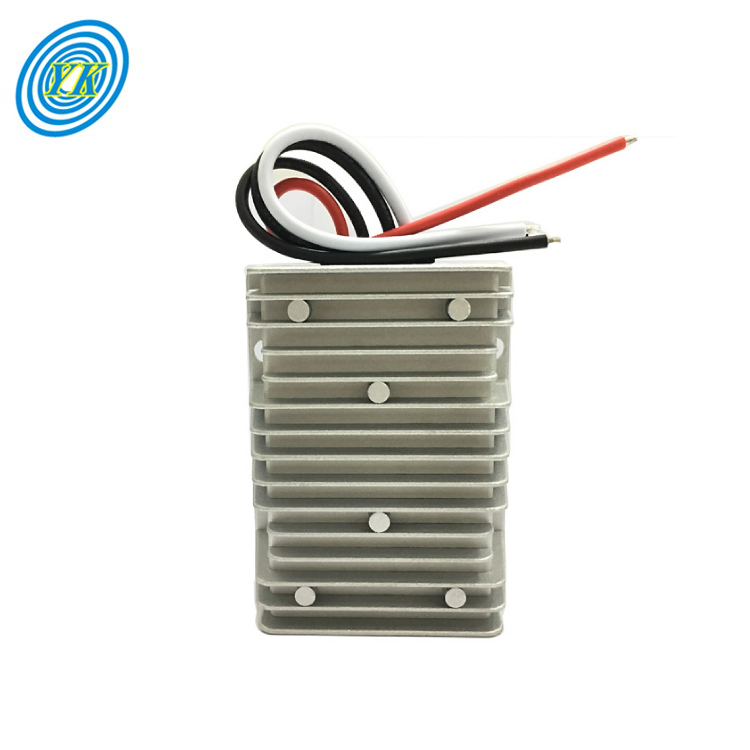
Title: "Empowering Efficiency: Revolutionary Trends in DC Power Management"
Click: 1221 Date: 07/30/2024 4::53::39 PM
Title: "Empowering Efficiency: Revolutionary Trends in DC Power Management"Optimizing Power: The Versatility of Step-Down DC-DC ConvertersStep-down, or buck converters, are essential for applications where a higher input voltage needs to be reduced to a lower, usable output voltage. They are widely used in battery chargers, multimedia devices, and gaming consoles due to their ability to efficiently manage power without excessive heat generation.Boosting Efficiency: Exploring Step-Up DC-DC ConvertersStep-up, or boost converters, are crucial for situations requiring an increase in voltage from a lower input. They find applications in hybrid vehicles and portable lighting systems where space constraints limit the number of batteries.Safety and Performance: The Role of Isolated DC-DC ConvertersIsolated DC-DC converters provide a layer of safety by separating the input and output circuits, which is vital for high-voltage applications and environments prone to electrical noise. These converters are commonly used in industrial automation and power supplies for IGBT drivers.Compact and Cost-Effective: Advantages of Non-Isolated DC-DC ConvertersNon-isolated converters connect the input and output directly, making them smaller, more efficient, and cost-effective. They are ideal for low-power devices across various industries, including communications and automotive sectors.Flexible Solutions: The Power of Buck-Boost DC-DC ConvertersBuck-boost converters are unique in their ability to adjust the output voltage either above or below the input voltage, making them highly versatile for devices powered by fluctuating battery levels, such as Li-ion powered gadgets and portable electronics.In summary, the advancements in DC-DC converter technology are pivotal in enhancing the efficiency, safety, and versatility of power management systems across a wide range of applications. From step-down to buck-boost converters, each type plays a crucial role in optimizing performance and meeting the specific needs of modern electronic devices.
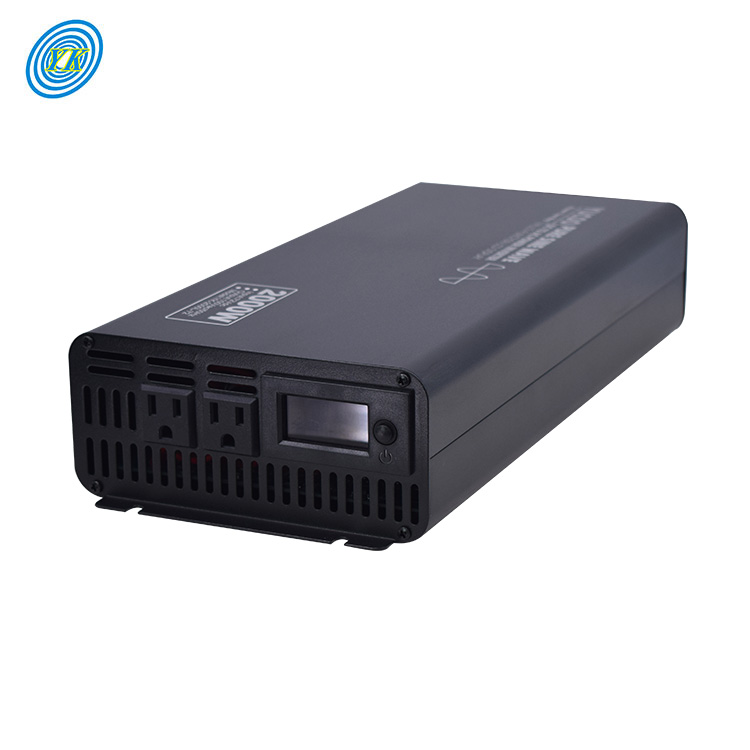
Revolutionizing Power Management: Insights into Modern Inverter Technology
Click: 1267 Date: 07/11/2024 3::59::27 PM
Revolutionizing Power Management: Insights into Modern Inverter TechnologyInverters have become pivotal in modern power management, providing efficient conversion of DC to AC power for various applications. From enhancing solar power systems to enabling off-grid living and powering portable devices, inverters are integral to our energy infrastructure. This article explores the efficiency and performance of solar inverters, provides guidance on selecting the right inverter for home use, compares off-grid and grid-tie inverters, highlights advancements in inverter technology for RVs and portable applications, and offers troubleshooting tips for common inverter issues.Solar Inverter Efficiency and PerformanceSolar inverters are the heart of any solar power system, converting the DC electricity generated by solar panels into AC electricity used by home appliances. The efficiency of these inverters is crucial, as it determines how much of the harvested solar energy is usable. Modern solar inverters boast efficiency ratings of up to 98%, minimizing energy loss during the conversion process. Performance metrics such as maximum power point tracking (MPPT) and inverter capacity also play significant roles in optimizing energy output and ensuring the system operates effectively under varying conditions.Choosing the Right Inverter for Home UseSelecting the appropriate inverter for residential use involves several considerations. Homeowners must decide between pure sine wave inverters and modified sine wave inverters. Pure sine wave inverters are more expensive but provide cleaner, more stable power, essential for sensitive electronics. Modified sine wave inverters, while cheaper, are suitable for less sensitive devices. Additionally, factors like power capacity, battery compatibility, and built-in features such as inbuilt chargers and smart connectivity should be considered to ensure the inverter meets the household's energy needs efficiently.Off-Grid vs. Grid-Tie Inverters: Which to Choose?Deciding between off-grid and grid-tie inverters depends on the intended application and energy independence goals. Off-grid inverters are designed for systems that operate independently of the utility grid, making them ideal for remote locations or situations where energy self-sufficiency is desired. These inverters typically include features for battery management and are robust enough to handle varying loads. On the other hand, grid-tie inverters connect directly to the utility grid, allowing for the selling back of excess power and providing a seamless transition between solar power and grid power. This setup is often used in residential solar installations where reducing utility bills is a primary goal.Advances in Inverter Technology for RVs and Portable ApplicationsThe demand for efficient, compact inverters for recreational vehicles (RVs) and portable applications has led to significant technological advancements. Modern RV inverters are designed to maximize space and energy efficiency, providing reliable power for onboard appliances and electronics. These inverters often include features like smart load management and compatibility with various power sources, including solar panels and vehicle batteries. Portable inverters have also evolved, becoming smaller, lighter, and more powerful, making them ideal for camping, outdoor events, and emergency power backup.Troubleshooting Common Inverter IssuesDespite their advanced capabilities, inverters can encounter problems that affect performance and reliability. Common issues include overheating, which can be mitigated by ensuring proper ventilation and using inverters with built-in cooling systems. Faulty wiring or connections often lead to performance drops or failures, highlighting the importance of professional installation and regular maintenance. Additionally, inverter settings and configurations must be correctly adjusted to match the specific application, whether it's for home use, RVs, or portable setups. Understanding these common problems and their solutions can help users maintain optimal inverter performance and extend the device's lifespan.ConclusionInverters are revolutionizing power management by offering efficient solutions for converting and utilizing electrical energy across various applications. From enhancing the performance of solar power systems to providing reliable power for off-grid living and portable devices, modern inverters are essential components in our energy landscape. By understanding the intricacies of inverter efficiency, selecting the right type for home use, distinguishing between off-grid and grid-tie systems, embracing technological advances for RVs and portable use, and troubleshooting common issues, users can maximize the benefits of their inverter systems and contribute to a more efficient, sustainable energy future.
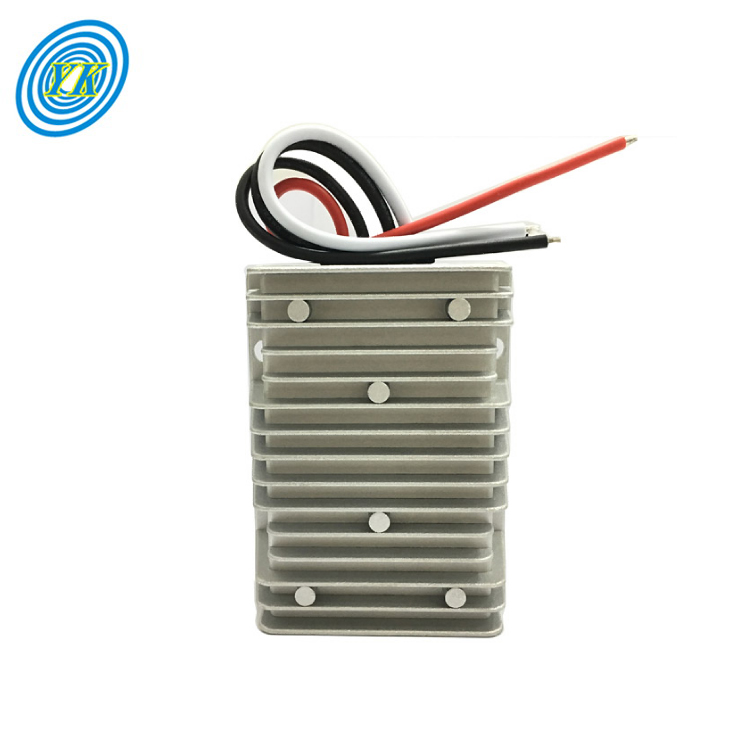
Boost DC-DC Converters: Optimizing Efficiency, Design, and Application
Click: 1239 Date: 07/08/2024 09::57::43 AM
Boost DC-DC Converters: Optimizing Efficiency, Design, and ApplicationBoost DC-DC converters are fundamental components in modern electronics, providing the essential function of stepping up voltage levels from a lower input to a higher output. Their applications span from renewable energy systems to portable electronic devices, making them indispensable in various industries. In this article, we delve into the critical aspects of Boost DC-DC converters, including optimizing efficiency, designing high-power units, understanding their applications, selecting the right integrated circuits (ICs), and the importance of simulation and PCB layout.Key Factors Influencing Boost Converter EfficiencyEfficiency is a paramount consideration in the design and operation of Boost DC-DC converters. High efficiency ensures minimal energy loss, which is crucial for battery-powered devices and energy-saving applications. Several factors influence the efficiency of Boost converters, including switching frequency, inductor selection, and thermal management.Switching frequency affects the size and performance of the inductor and capacitors. Higher frequencies allow for smaller component sizes but can lead to higher switching losses. Balancing these trade-offs is essential for achieving optimal efficiency. Additionally, selecting high-quality inductors with low resistance and adequate current ratings can reduce losses and improve overall performance. Effective thermal management, including heat sinks and cooling solutions, is also critical in maintaining efficiency by preventing overheating.Designing High Power Boost ConvertersDesigning high-power Boost converters requires meticulous planning and consideration of several key elements. These converters must handle higher currents and voltages, which necessitates robust components and efficient thermal management strategies. The choice of MOSFETs, diodes, and capacitors plays a significant role in the converter's ability to manage high power levels.Circuit design techniques, such as interleaving multiple Boost stages, can enhance performance and reduce ripple current, improving overall efficiency and reliability. Moreover, incorporating feedback control mechanisms ensures stable output voltage and adapts to varying input conditions. Advanced design tools and simulation software can aid in optimizing these high-power designs, ensuring they meet the desired specifications and performance criteria.Applications of Boost DC-DC ConvertersBoost DC-DC converters are versatile and find applications in numerous fields. In renewable energy systems, they are used to step up the voltage from solar panels or fuel cells to match the requirements of the load or battery storage. In automotive applications, Boost converters provide the necessary voltage for components that operate at higher levels than the vehicle's battery.Portable electronic devices, such as smartphones and laptops, also rely on Boost converters to maintain stable voltage levels despite fluctuating battery outputs. LED drivers, medical devices, and industrial control systems are other areas where Boost converters are crucial, highlighting their wide-ranging applicability and importance in modern technology.Choosing the Right Boost Converter ICSelecting the appropriate IC for Boost converters is critical for achieving the desired performance and efficiency. The IC determines the control strategy, switching frequency, and protection features, all of which impact the converter's operation. Manufacturers offer a wide range of ICs tailored for different power levels, efficiency requirements, and application-specific features.When choosing a Boost converter IC, it's essential to consider factors such as input voltage range, output voltage capability, switching frequency, and thermal performance. Additionally, integrated protection features, such as overcurrent and overtemperature protection, can enhance the reliability and safety of the converter. Evaluating the datasheets and application notes provided by IC manufacturers can provide valuable insights into the best choice for your specific application.Simulation and PCB Layout for Boost ConvertersSimulation and PCB layout are integral parts of designing efficient and reliable Boost converters. Simulation tools allow engineers to model and analyze the converter's performance under various conditions, identifying potential issues and optimizing component values. These tools can simulate the effects of parasitic elements, thermal behavior, and dynamic responses, providing a comprehensive understanding of the converter's behavior.PCB layout is equally important, as poor layout can lead to increased electromagnetic interference (EMI), higher losses, and thermal issues. Key considerations for PCB layout include minimizing the length of high-current paths, proper placement of components to reduce noise, and effective thermal management. Utilizing ground planes, adequate spacing, and proper routing techniques can significantly enhance the performance and reliability of the Boost converter.ConclusionBoost DC-DC converters are essential components in modern electronics, enabling efficient voltage step-up for a wide range of applications. By understanding and optimizing key factors such as efficiency, design, and component selection, engineers can develop high-performance Boost converters that meet the demands of various industries. Incorporating simulation and careful PCB layout further enhances the reliability and effectiveness of these converters, paving the way for innovative and energy-efficient solutions in today's technology landscape.
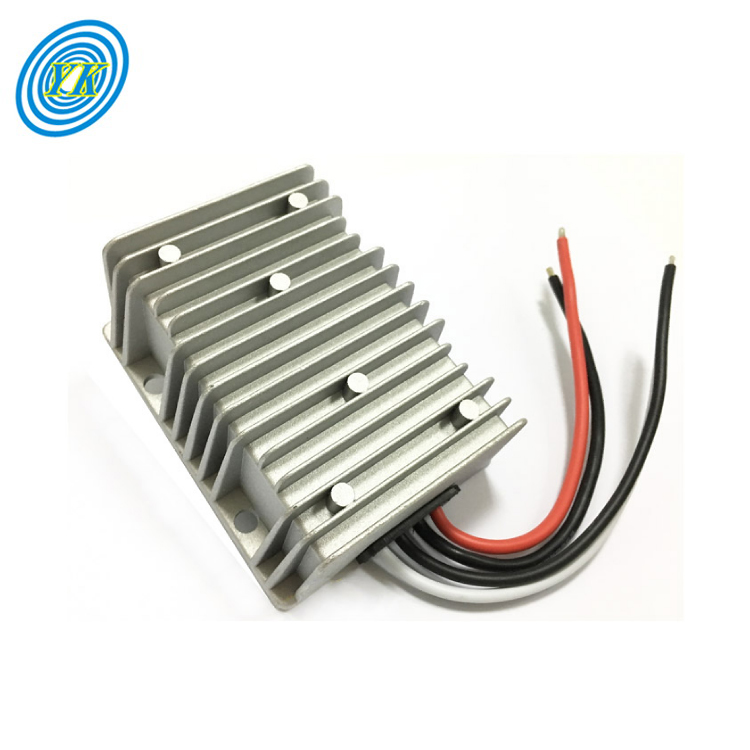
Efficient Power Solutions: Exploring Buck DC-DC Converters
Click: 1317 Date: 04/26/2024 2::18::38 PM
Efficient Power Solutions: Exploring Buck DC-DC ConvertersIn today's rapidly evolving technological landscape, the demand for efficient power solutions has never been greater. From portable electronics to renewable energy systems, the need for compact, reliable, and energy-efficient converters is paramount. In this article, we delve into the world of Buck DC-DC converters, exploring their innovative features, diverse applications, and the transformative impact they have on power management.At the heart of modern electronics, Buck DC-DC converters play a crucial role in voltage regulation and power conversion. Unlike traditional linear regulators, which dissipate excess power as heat, Buck converters employ a switching mechanism to efficiently step down voltage levels while minimizing energy loss. This unique approach not only enhances energy efficiency but also enables the design of smaller, lighter, and more power-efficient devices.One of the key advantages of Buck converters is their versatility. With adjustable output voltage and current limits, these converters can accommodate a wide range of input and output requirements, making them suitable for various applications across industries. From consumer electronics and automotive systems to industrial automation and renewable energy installations, Buck converters provide a reliable and cost-effective solution for voltage regulation and power management.In the realm of portable electronics, Buck converters are indispensable. By efficiently stepping down battery voltage to match the requirements of sensitive electronic components, these converters extend battery life and enhance overall device performance. Whether powering smartphones, tablets, or wearable devices, Buck converters ensure optimal power delivery, enabling seamless user experiences and uninterrupted operation.Furthermore, in renewable energy systems, Buck converters play a pivotal role in energy harvesting and storage. By efficiently converting and regulating the voltage output from solar panels or wind turbines, these converters maximize energy yield and ensure stable power output. This is essential for grid-tied systems, off-grid installations, and energy storage solutions, where reliable and efficient power conversion is critical for optimal system performance.In conclusion, Buck DC-DC converters represent a groundbreaking advancement in power electronics technology. With their innovative design, versatile applications, and unparalleled efficiency, these converters are driving transformative changes in power management and enabling the development of next-generation electronic devices and renewable energy systems. As we continue to push the boundaries of innovation, Buck converters will undoubtedly remain at the forefront of efficient power solutions, shaping the future of technology and sustainability.
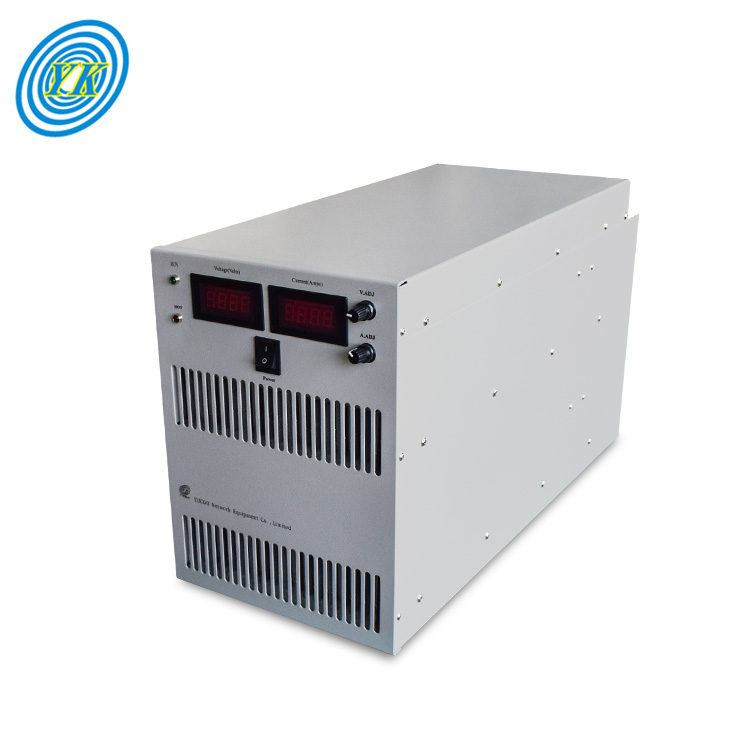
Revolutionizing Power Solutions: Exploring the Versatility of Adjustable DC Power Supplies
Click: 1465 Date: 04/16/2024 3::55::37 PM
Revolutionizing Power Solutions: Exploring the Versatility of Adjustable DC Power SuppliesIn the dynamic landscape of technological advancement, the heartbeat of innovation resonates through the veins of adjustable DC power supplies. These versatile devices, often overlooked in their simplicity, are the unsung heroes behind countless breakthroughs in various industries. From electronics prototyping to scientific research, their adaptability and precision fuel the engines of progress.Unveiling the VersatilityAt first glance, adjustable DC power supplies might appear mundane—a mere conduit for electrical energy. However, beneath their unassuming facade lies a world of possibilities. With the ability to regulate both voltage and current, these power sources offer unparalleled flexibility, catering to the diverse needs of engineers, researchers, and hobbyists alike.Consider the scenario of electronics prototyping—a realm where innovation thrives on experimentation and iteration. Here, the adjustable DC power supply emerges as a silent protagonist, providing designers with the freedom to fine-tune voltage levels and test the resilience of their creations under various operating conditions. Whether simulating battery voltages for portable devices or validating circuit designs for industrial machinery, the precision control offered by these power supplies is indispensable.Empowering ExplorationBeyond the confines of the workshop, adjustable DC power supplies play a pivotal role in scientific discovery. In laboratories around the globe, researchers harness the potential of these devices to conduct groundbreaking experiments and push the boundaries of knowledge. From powering sophisticated instrumentation to driving electrochemical reactions, their reliability and accuracy are paramount.Imagine a team of scientists embarking on a quest to unravel the mysteries of the universe through particle physics. In their pursuit of truth, they rely on adjustable DC power supplies to energize particle accelerators, generating high voltages essential for particle collisions. With each experiment, these power sources serve as the catalysts for new insights, illuminating the path towards scientific enlightenment.Fueling Future FrontiersAs we stand on the cusp of a new era of innovation, the importance of adjustable DC power supplies cannot be overstated. From renewable energy systems to electric vehicle technology, these devices will continue to underpin the development of tomorrow's solutions. Through ongoing advancements in efficiency and reliability, they will empower visionaries to turn dreams into reality, shaping a brighter future for generations to come.In conclusion, adjustable DC power supplies are not just tools; they are enablers of progress, catalysts of change, and beacons of innovation. As we harness their potential and push the boundaries of what is possible, we pave the way for a world where imagination knows no limits and innovation knows no bounds. Together, let us unleash the full potential of these remarkable devices and power the future of innovation.
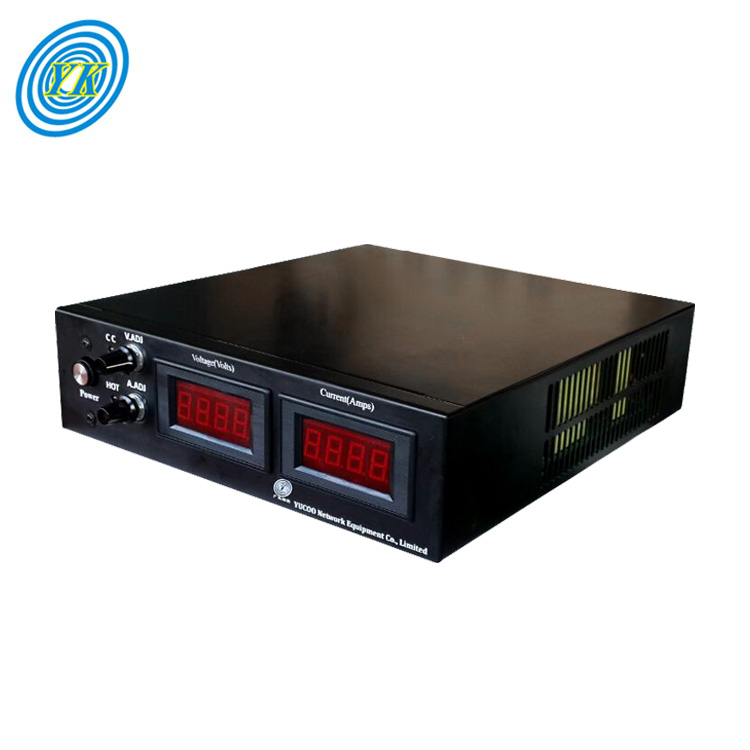
Empowering Effectiveness: Evolutionary Trends in Managing DC Power
Click: 1303 Date: 04/08/2024 3::44::14 PM
Empowering Effectiveness: Evolutionary Trends in Managing DC PowerIn today's fast-paced technological landscape, the management of direct current (DC) power has witnessed remarkable advancements. As industries embrace innovation and consumers demand greater efficiency, the role of versatile DC power sources becomes increasingly pivotal. These power solutions serve as the cornerstone of various applications, spanning from electronics testing to industrial automation.Adaptable Power Sources: Unlocking Versatility in Energy Provision The hallmark of contemporary DC power management lies in its adaptability. With the capability to adjust voltage settings and regulate currents precisely, these power sources offer unparalleled versatility. Whether powering sensitive electronics or driving heavy-duty industrial machinery, adaptability is paramount.Personalized Energy Solutions: Tailoring Power Delivery to Unique Demands In response to evolving needs, customization options for DC power solutions have expanded significantly. Engineers and technicians can now select power sources with tailored output characteristics, catering to specific application requirements. This level of personalization empowers users to optimize energy solutions for peak performance and efficiency.Enhanced Control Mechanisms: Elevating Precision and Stability Precision remains a cornerstone of effective DC power management. With cutting-edge voltage regulation technology and refined current control mechanisms, these power solutions ensure consistent and reliable performance. Whether deployed in laboratory settings or industrial environments, precision control guarantees accurate outcomes and steadfast operation.Trailblazing Solutions for Laboratory Settings: Driving Innovation Forward In the realm of laboratory power solutions, innovation continues to flourish. From the development of compact, high-efficiency power sources to the integration of advanced monitoring and safety features, these solutions redefine the boundaries of laboratory power management. Their versatility and reliability empower researchers and scientists to push the boundaries of discovery.Advancements in Voltage Regulation: Pioneering Efficiency and Sustainability The evolution of voltage regulation technology marks a significant milestone in DC power management. By optimizing energy conversion processes and minimizing wastage, advanced voltage regulation technologies enhance efficiency and promote sustainability. These innovations underscore the commitment to environmentally conscious power management practices.In Conclusion: In summary, the evolution of DC power management represents a testament to human ingenuity and technological progress. With their adaptability, customization options, precision control mechanisms, and focus on sustainability, DC power solutions play a pivotal role in driving efficiency across diverse industries. As we navigate the complexities of a rapidly evolving world, the continued innovation in DC power management promises to shape a more efficient and sustainable future.
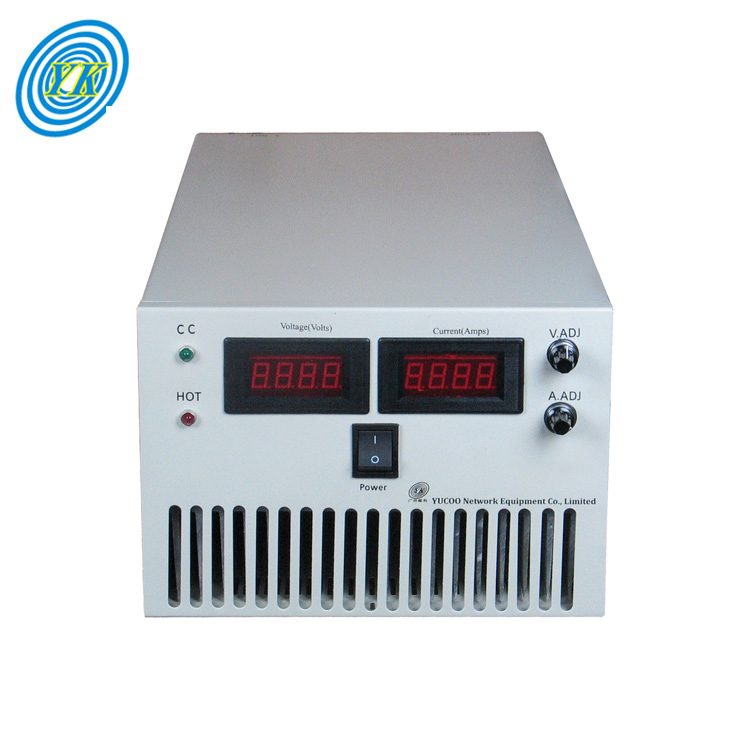
Empowering Efficiency: Revolutionary Trends in DC Power Management
Click: 1294 Date: 04/03/2024 2::48::25 PM
Empowering Efficiency: Revolutionary Trends in DC Power ManagementIn the realm of electrical engineering and technology, the demand for adaptable power solutions continues to grow. As industries evolve and consumer needs become more diverse, the importance of versatile DC power sources cannot be overstated. These power sources serve as the backbone of numerous applications, ranging from electronics testing to industrial automation.Diverse Functionality: The Flexibility of DC Power Sources One of the defining features of modern DC power sources is their ability to adapt to a wide range of requirements. From adjustable voltage settings to precise current regulation, these power sources offer a level of flexibility that is essential in today's dynamic technological landscape. Whether powering sensitive electronic devices or driving high-current industrial machinery, versatility is key.Customization Options: Tailoring Power Solutions to Specific Needs Innovation in the field of DC power sources has led to an array of customization options. Engineers and technicians can now select power sources with specific output characteristics, such as variable voltage and current limits, to suit their unique applications. This level of customization empowers users to optimize their power solutions for maximum efficiency and performance.Precision Control: Enhancing Accuracy and Reliability Precision is paramount when it comes to DC power sources. With advanced voltage regulation technology and precise current control mechanisms, these power sources deliver consistent and reliable performance. Whether operating in laboratory settings or industrial environments, precision control ensures accurate results and dependable operation.Applications Across Industries: From Electronics to Renewable Energy The versatility of DC power sources extends across a wide range of industries. In electronics testing and prototyping, these power sources provide the necessary voltage and current levels for component validation and performance analysis. Additionally, in renewable energy applications, such as solar and wind power systems, DC power sources play a crucial role in energy conversion and storage.Driving Innovation: The Future of DC Power Technology As technology continues to advance, so too will the capabilities of DC power sources. From the integration of smart features for remote monitoring and control to the development of eco-friendly power solutions, innovation in this field shows no signs of slowing down. With each new advancement, DC power sources will continue to empower efficiency and drive progress across industries.Conclusion: In conclusion, the versatility of DC power sources is a testament to the ingenuity and innovation of the electrical engineering community. With their diverse functionality, customization options, precision control, and wide-ranging applications, these power sources are indispensable in today's interconnected world. As we look to the future, it is clear that DC power technology will remain at the forefront of technological innovation, driving progress and powering the innovations of tomorrow.
